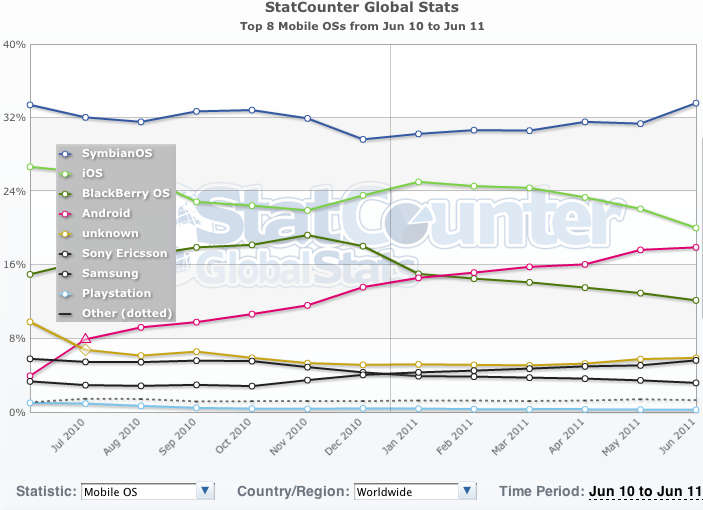Here's the StatCounter (interactive) chart:

With many hundreds of millions of active Symbian users across the world, it's not surprising that, with the growth of awareness of 'Internet on your phone', these people are starting to use the data connections on their phones.
Rafe adds:
The worldwide share statistic is a reflection of Symbian's installed base. It provides a useful counterpoint to the usual monthly and quarterly sales statistics and, perhaps, offers a wake up call for some commentators.
Looking at the data broken down by geography it is possible to see the challenges facing Symbian and the reasons for Nokia's smartphone platform strategy change. In Europe, Nokia's home market, the share figures have Symbian at 10%, in fourth place, behind iOS, Android and Blackberry OS. This is a reflection of Symbian's lack of competitiveness in higher end devices. There's a clear argument that this trend would, in time, be repeated in other markets.
Nonetheless, the figures do demonstrate that Symbian, despite having a visible end of life date (2015 or so), remains a force to be reckoned with on the mobile web. This suggests that those developing mobile websites and related services would do well to give as much attention to optimising for Symbian as they do for Android and iOS.
We'll end with a word of caution - any statistics are only as good as the data they are based on. Statcounter does draw on a wide base and is, perhaps, less biased to one platform that many of the advertising network based statistics, but should still only be treated as indicative.
